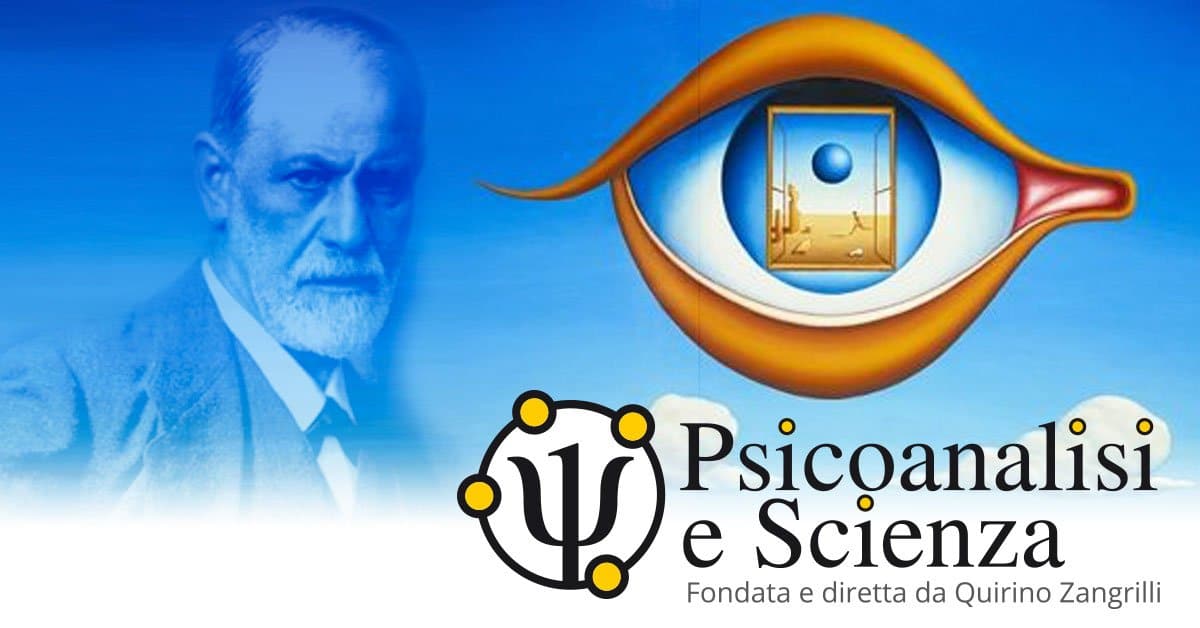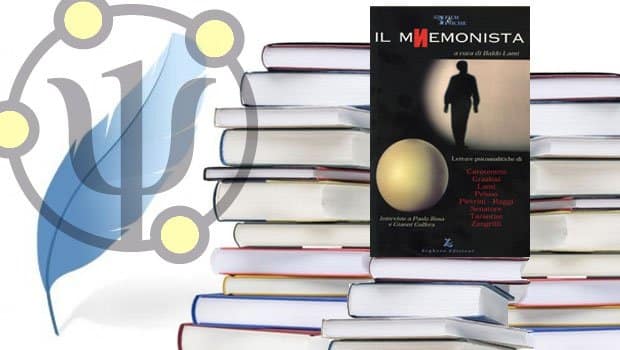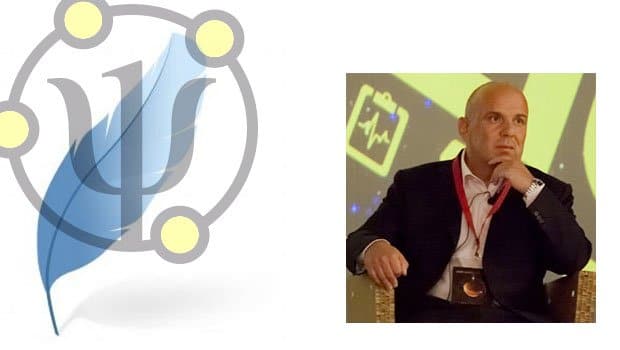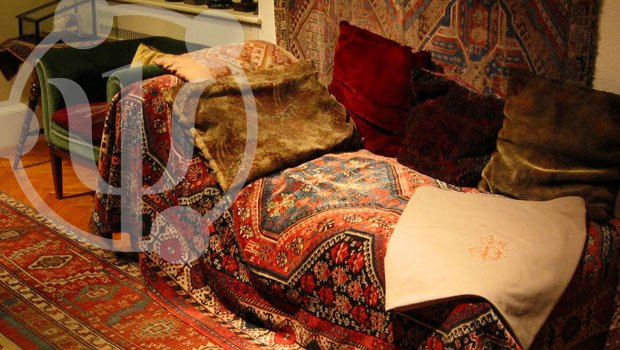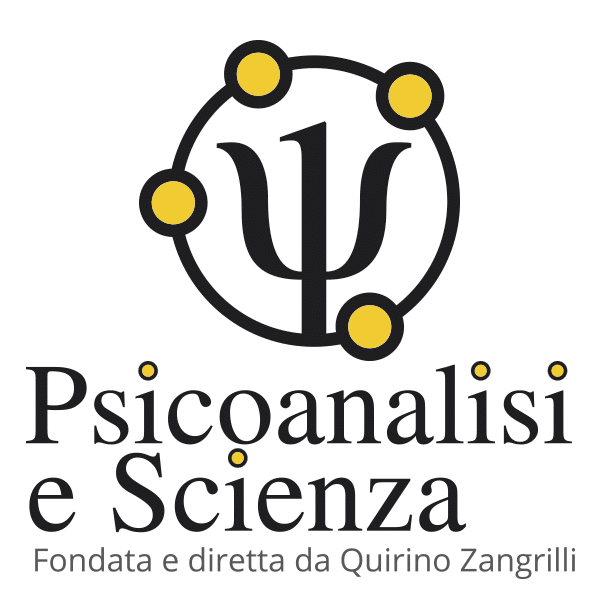Transgenerational Transmission of the Image With Particular Reference to the Phylogenetic Determinant of the Paranoia
One of the technical modalities which permits the contact and the comprehension of the micro-dynamics of the Image is the study of the sessions’ recordings. In fact, it often occurs that the associative series produced by the patient stimulated by listening to the registration of his material, sometimes almost totally correspond to the associations that he had previously produced (maybe one or two years before) during the session which is being analysing.
When the phenomenon repeats itself and makes itself evident, the following thing happens: the patient becomes aware, not without a certain amazement, that in reference to the re-investment of the conflictual nuclei, he has a well determined number of associative responses on the psychic elaboration level which can in turn nourish behavioural choices or somatic responses which tend to repeat themselves.
It is the discovery of the existence of psycho-biological moduli of which an individual has at his use to manifest his existence: a sort of pack of cards or possible combinations from which to pick. The analysis, if conducted deeply, breaks up the conflict and the croupier ceases always more to be the compulsion to repeat and is substituted by the creator chance. Nonetheless, the cards for the game of the life remain the same.
Since, if we move the research onto a phylogenetic level, both with the genealogical research and the familiar micropsychoanalysis one, we will see that the somatopsychic moduli of the person are, within certain limits, hereditary and the hidden traces or sometimes absolutely evident ones can be found in the precedent generations.
We can, for example, follow the course and the ramifications of any phenomenon, be it a vital, pathological (psychic or somatic symptoms) or mortiferous (death modality) attempt. Now we will follow the case of a patient whom we will call Mr. A who had concluded his micropsychoanalysis many years ago, in the sense that, having neutralised his conflictual nuclei he was able to fulfil himself both on an existential level and on a professional one. Nonetheless, he continued to be tormented, certainly in a less dramatic manner, by the destiny of his family members, in which grounds permeated by primary masochism intertwined themselves with psychobiological solutions which are often disastrous (premature deaths with high incidence of malignant tumoral forms or suicides). In the years that followed the end of his personal micropsychoanalysis, now that he was capable of welcoming more easily the messages which came from his unconscious, he perceived the existence of a kind of familiar unconscious request finalised in neutralising a trauma of which he knew not the form nor the origin. One day, while he was visiting a monumental cemetery an extraordinary event happened. The cemetery had a particularity: it was built on a hill which was very rich in animal and vegetable fossils and for the reason was an important touristic destination.
Mr A. sat by the side of a tombstone in serene concentration; total silence reigned. Almost unaware, he gathered two or three stones that had evident fossil traces, he observed them and, following the association that they were many and in close contact with the mortal remains, he was finally able to accept the illumination: the insight of the final mineralisation of living matter, the acceptance of the absolute disappearance of the organic complexification which put him in definitive contact with the constitutive Void. Between the dead and those fossils and stones there was no longer any difference. A liberating sob invaded him followed by a serenity and a sensation of liberation which was absolutely unusual.
The profoundness of the auto-analytical enterprise made by Mr. A would escape us if we did not consider some aspects of his micropsychoanalysis regarding his family and his phylogenesis. Mr. A’s father, who we will call AA, had lost his own father at a tender age, in the very midst of the Oedipus activation and he was not able to assist his father’s burial. Manuela Tartari 1 in an article of 1988 effectively highlighted the eventual pathogenic consequences of a non-participation to the rite of the burial: in absence of the perception of this, profound ambivalent pressures of the hallucinatory type emerge: the dead person is not dead! And such pressures, integrating themselves with the defensive processes, can transform themselves into the phantasy of the persecutor: the unquiet phantasm.
In effect, at the loss of his father, to the initial sensation of liberation, the difficulty had sub-entered of identifying himself with the image of his father, which seemed terrifying to him, conforming himself always more to the image of the ancestral castrator father, lacking by then the possibility of a confrontation with the real data (the historical person of the father). By observing such a dynamic one can completely understand the role of shock absorber which living parents play towards the Image, above all, as Silvio Fanti affirms 2 , the grandparents. Such difficulty of identification prevented a physiological elaboration of the mourning. Mr. AA’s dreams (the father of A) began to resemble an incessant nightmare: the contemplation of the mute and sinister image of the dead parent. Such oneiric dynamic diminished when, at the distance of about thirty years from the burial, the patient and his father assisted the exhumation of the corpse of the respective grandfather and father. Also on that occasion a pathological response of denial of the loss became apparent in Mr. AA: the body of his father, evidently almost reduced to the skeletal structure, appeared intact to him. This fact permitted a kind of family myth to manifest itself again which belonged though to the maternal branch of Mr. A’s family. Once again they began to talk about an ancestor of the patient who, exhumed after 50 years from the burial, was in effect found practically intact, insomuch as The Institute of Forensic Medicine of Rome had requested a bioptic sample for experimental studies.
That event had reinforced the impression that in Mr. A’s family the dead only ‘apparently’ died. On the other hand, it also explained the frequency with which in the maternal branch subjects who claimed to have mediumistic powers and habitually spoke, in dreams or in a wake state, with these pseudo-dead family members. Years after these events Mr A’s mother, who had manifested for all her life a kind of almost symbiotic dependence to her mother, lost her through a malignant cancer. On that occasion the pressures of denial of the loss, present in the whole family group, became evident; pressures that concreted themselves in the difficulty for numerous relatives in the maternal branch (including Mr. A’s mother) of the awareness of the occurred death, insomuch that the repeated illusions that the corpse opened its eyes or breathed made it necessary that two doctors confirmed the death. The lady, however, was unable to elaborate the loss and tried to deny it with that disastrous attempt of making the dead person relive through the reproduction of his symptoms (pathological identification), developing or however making apparent her own rapidly progressive cancer which killed her just three months after her mother’s death. The interesting thing is that in the final phase of the illness, delirious persecutory ideas manifested themselves that were focused on the fact that it was the recently deceased mother who was taking revenge on her by eating her organs from the inside.
Through his micropsychoanalysis, all the failed attempts to find an elaboration of the primary traumatic nucleus of the loss had finally been crystallised and achieved in Mr. A. The unsuccessfulness of these attempts led the family group to a denial response with the consequent pathological elaboration of the mourning, establishing an almost diabolic carousel of death. With the insight of the mineralisation, Mr. A buried the dead of all the family, his weeping expressed the weeping for all the dead of all time, his liberation was the liberation from the restless ghosts of his ancestors of all time. The dead could finally rest and the living finally live in peace.
Now that we have introduced the idea of transmission of that energetic module which is the Image, I would like to dwell upon a phase of structuring of the human psychism which is in my opinion, of great importance in the psychopathology field: the process of transformation which I define “actualisation of the human psychism” and which Silvio Fanti 3 indicates as “specification in the Id of the idean inheritance”. As can easily be imagined, it is a very delicate process: The harmonisation of the maternal and paternal genome often configures an out-and-out clash, a war which is primarily idean and subsequently genetic which maintains itself in a precarious balance for the whole of its life. In the energetic crucible constituted by the fertilised egg interacting with the uterine environment you end up with (in the normal evolution) harmonising the idean energetic moduli and obtaining a certain grade of ontogenetic actualisation in this incessant interaction with the maternal psychism which acts as an activator.
In other terms, as Nicola Peluffo underlines 4 , the internal conflict is already prefigured at a phylogenetic level and re-actualised since the first post-conceptional moment by the struggle between the maternal and paternal phylum and only some of the iconic facets of the Image are illuminated and fixed by the intrauterine conflict. In each of us there is always a certain level of conflict between the necessities of the Image and those of its ontogenetic vehicle. It was already a fertile intuition of Jung who, in the maturity of his work, began to interpret the conflict as the result of the clash between imago and archetypes, but only the micropsychoanalysis with the systematic study of the Image and of the idean inheritance and with the scientific proof of the genealogical transformations, through the comparative study of the dream and the family micropsychoanalysis, completely demonstrates the great possibilities of therapeutic analytical intervention. To deepen this argument and to illustrate the etiopathogenic implications in the study of the great psychotic syndromes I will use the material of another patient. It deals with a case already illustrated for other aspects in my article “The Micro-dynamics of the Transference”.5
The young man who was affected at the moment of the first observation by a serious form of Spitz anaclitic depression, provoked by the precocious death of his mother and partially protected by a psychotic position of denial of the loss, through a long period of analysis had succeeded in becoming aware of the loss of his mother, in elaborating the mourning and in establishing a satisfying relationship with a young woman, on a sexual-affective level. The micropsychoanalytic treatment had determined the unbinding from the persecutory image of the wandering “zombie-mother” who was at the same time, an intolerable persecution, but however, a defence mechanism, and with a spectacular improvement in his social life it had uncovered the conflict structure which was rooted, as happens in these cases, in the phylogenetic vicissitudes of the subject.
An intense existential sufferance remained which often manifested itself in a feeling of deep grudge against human beings and the world to which the patient could not attribute the minimal explanation, based on the ontogenetic vicissitudes which had been however minutely plumbed.Nothing else remained other than to move the work into the genealogical research field and onto the analysis of dreams which would eventually have been activated by this research.
During the course of the research the patient soon managed to reconstruct a family event which for a numerous amount of sessions captured his attention. In a very schematic manner the history is as follows: his great-grandmother, a very dignified woman even though from humble origins, had a relationship with a very high-ranking and wealthy person, during which she got pregnant. Reassured by the man the woman continued the pregnancy to full-term but on the very day of the birth of the baby-girl (who was the grandmother of the patient in question) the new father ran off abandoning his daughter and his companion, leaving no traces. The great-grandmother of the patient blinded by hate and pain shortly after abandoned her daughter in a foundling hospital. The latter, after an understandably difficult life, married a man from whom she had a daughter (the patient’s mother). The groom died only three years after the birth of his daughter, in the same way as would have happened to the patient’s mother who also died when he was three years old. The young man, after having become aware that many of his repetitive attempts converged to the unconscious reconstruction of the genealogical trauma of abandonment (the patient often repeated: ” I have to live a love story which ends in a dramatic way”), manages to give an explanation and a body to the infinitive (and until that moment absolutely incomprehensible) hatred, which he feels towards the whole world, becoming aware of having entered the role of the maternal phylum avenger. On the other hand, even his mother must have been subjected to the same unconscious tremendous conditioning and probably exactly because of a massive displacement inside herself of the idean aggressiveness, she became ill and died prematurely. Here are some of patient’s associations: “The realisation of this desire to live life is impeded by an image of death and revenge: recreating the same people who created me and those who created them to do to them everything that they did so that they pay for my sufferance… but my sufferance? Or my grandmother’s?”. The liberating turning-point of the case arrives through the analysis of a dream which the young man brings to the session together with a picture frame containing a photo of his mother that for many years he had kept jealously on his bedside cabinet. The manifest content of his dream in synthesis is the following:
“I am in my bed; my granddad arrives and wants his place back. I have to go to the radio station and he takes his place back. I am in bed, you are in a session analysing me and you are in my mother’s place in the photo in the picture frame that I have brought you (this is known as the transference!). I find myself asking someone for directions thinking that it’s very strange that I’ve got lost. Finally, I arrive at the station. Then I see a pack of white dogs but I have to go my own way” (in other terms he has to leave the pack)
This is a small part of the associative material which was spontaneously produced during a four hour long session dedicated to this dream: “It’s as if everyone must take back their own place… every chess piece returns to its place. It is as if in my life the agony of my mother is relived, that of her father and the hatred of my abandoned grandmother. I was speaking about the Image: this image torments me and it is as though I have to place all my energies to the service of this image. I do everything I can to enter that photo…”. I enlarge the photo to the maximum possibility for him, projecting it with an episcope. He cries. “Since she no longer lives, she lives inside me… I was in the wrong place… my granddad wanted his place back, which I had occupied… I had recreated that which had created me… I try to get to my place in the radio station… then I arrive at a train-station – (He shouts:) – I am a train-station!… It’s fantastic! I am a train-station, I am a set point, not a meteor which wanders through space! I can’t go back: I have overcome a wall; I remain fixed!”.
Here is the transformation which is accomplished. The reconstruction of the phylogenetic traumatic vicissitude, the abreaction of the affect connected to it and the verbalisation of revengeful intentions of an unexpressed hate which did not regard his existence and still it lived inside him as an accompanying affect to a series of images that replicated the genealogical drama, inactivating the sucking whirlpool of the repetition, this incessant backward suction which utilises the dead drive as a motor force and which mobilises an enormous anguish. The patient manages to actualise himself, finally finding his own place in the existence, while the images of his ancestors find peace and return to their sacellum.
Following these dynamics and verifying them continuously during the course of the genealogical research I have progressively reached an idea of the paranoiac syndrome which induces me to interpret it as a defect of actualisation of the human psychism that continues to be subdued to the Image’s will, which dictates in an anachronistic and repetitive way the ontogenetic modalities of the existence. I consider the paranoia as a virosis in which the infecting agent is the Image, intended in a micropsychoanalitic way, as transgenerational representational-affective software, which serves itself of the ontogenetic host to re-create the conditions of a trauma rooted in the phylogenesis and which requires several repeats to be abreacted.
This explains, among other things, the frequency of the vicissitudes of possession or the delusion of influence in the paranoiac psychosis: the paranoiac is effectively a person possessed by the messages of the Image which are transmitted through an oneiric activity that is not sufficiently dreamed-off; he is a loudspeaker who tries desperately, without managing, to become a transmitting centre.
In my previously cited article, following the route traced by Nicola Peluffo 6 , I had defined the paranoia as the phylogenetic precipitate of the failure of trans-generational attempts to permit the entrance of the Other into the fusional relationship. I had hypothesised that in the genealogical patrimony of these subjects some traumatic situations had effectively verified themselves which, having the ability to determine the destruction of the individual, provoked catastrophic defensive responses.
In other words, a hyper-activation of the death pole of the death/life drive happens, connected to a real phylogenetic traumatic situation which is bound through the use of a defensive servomechanism (one of the most efficacious is the paranoiac one inasmuch as it is based on the reality denial) but it could be, in conformity with the psychic ground, the appetency for a fetish-drug and therefore the drug addiction, or the somatic investment with the construction of screen-illnesses. These defensive automatisms inserted in the generational Id are reactivated in the situation of penetration of the Third in the fusional universe. The outcome is the compulsory repetition of the failure of the object-relation realisation with a massive return to the situation of primary narcissism which, in turn, nourishes the symptoms of megalomaniac omnipotence. 7
This vision gives us a modern interpretation of “Jensen’s Gradiva” which so passioned Freud. 8
As is well known, in Jensen’s Gradiva, the protagonist, the archeologist Norbert Hanold, whilst visiting the Vatican museum in Rome, is able to admire a bas-relief which re-produces a female figure that troubles him very much and which he will call Gradiva.Norbert progressively begins to feel an obsessive attraction towards the stone figure. Soon after, he has an anguishing dream where, he finds himself in the ancient city of Pompei in the precise moment in which the erupting Vesuvius is about to destroy the city. In the dream, he discerns Gradiva in front of him and an idea rises within him, which is decisive for the structuring of the delusion, that Gradiva was Pompeian and they had both lived contemporaneously in ancient Pompei. Before he is able to warn her, Gradiva becomes buried by the eruption. Being unable to dream-off such a dream, the delusion possesses him. A thought completely occupies his mind, that is to say, the problem “of which essence could the corporal appearance of a being like Gradiva be, contemporaneously dead and alive, even if only alive during the meridian hours of the spirits”. It is she herself who enters into his dream to cure him using, Freud underlines, procedures which are very similar to those in psychoanalysis. Finally, Norbert recognises in her Zoe Bertgang, his gracious neighbour, who was once his childhood playmate and his sentiments shift from the petrified woman to the woman of flesh, breaking the circle of delusion.I believe that the attraction for Jensen’s splendid work is clear: it speaks about a great trauma rooted in the past, literally represented by the cataclysm of Pompei, which one unconsciously tries to recreate to change the course of events.
Gradiva is the Wandering Statue, the Sphinx, the Image which captures all of Norbert’s vital energies. The recovery takes place in the moment in which the protagonist’s psychism manages to unbind itself from the imperiousness of the statue (in other terms, from the delusion) and place itself in the present, putting an end to the whirlpool into the past. A past which often has the appearance of a wandering spirit, of a restless entity. On the other hand and to finish with, many people forget that the same Oedipus already atones a curse which does not regard his ontogenesis: he atones his father’s blame, Laius, who, in exile at the court of King Pelops in Pisa, falls in love with the king’s son, Chrysippus, and abducts him: for this reason all his lineage is cursed and his descendants pay for a crime never directly committed.
NOTE:
– M. Tartari • Fantasmi familiari e immigrazione • Convegno “I segni e i sensi del male”, Torino, ottobre 1988.
2 – S. Fanti • La micropsicoanalisi • Borla, Roma, 1983.
– S. Fanti, op. cit.
4 – N. Peluffo • Immagine e fotografia • Borla, Roma, 1984.
5 – Q. Zangrilli • Microdinamica del transfert • Bollettino dell’Istituto Italiano di Micropsicoanalisi n°6, 1988.
6 – N. Peluffo • La situazione • Bollettino dell’Istituto Italiano di Micropsicoanalisi n°5, 1987.
7 – P.L. Bolmida • La scelta anaclitica in prospettiva filogenetica • Bollettino dell’Istituto Italiano di Micropsicoanalisi n°7, 1988.
8 – S. Freud • Il delirio e i sogni della Gradiva di Wilhelm Jensen • Opere, Vol. 5, Boringhieri, Torino, 1975.
Nel 2024 riceve il Premio Accademico d’Onore della Accademia Culturale Internazionale Cartagine 2.0.
Nel 2024 docente ad Almaty – Kazakhstan presso il workshop di psicoanalisi sul tema della violenza, promosso dall’Università di psicoanalisi di Mosca in collaborazione con l’Istituto svizzero di micropsicoanalisi.
Doctor Quirino Zangrilli was born in Fiuggi in 1955. Graduated with honours in Medicine and Surgery in 1980, he practices Psychoanalysis, with intensive method, since 1982. He is author of 72 scientific pubblications. He has attended as speaker or president of session to many national and international scientific Conventions. His book “La vita:involucro vuoto” (Life: empty involucre), published by Borla in 1993, has been in use by the Chair of Dynamic Psychology at Turin’s University since 1994. He is the author and founder of the multimedia review “Psicoanalisi e Scienza” (Psychoanalysis and Science), the most read Italian on line review of psychoanalysis. In 2012 he participated as a Speaker at the Scientific Festival of BergamoScienza. In 2013 he illustrated his research on the maternal-fetal interaction in the Special Session of the XI World Congress of Perinatal Medicine in Moscow with his relation “Intrauterine Imprinting”. He is visiting teacher at Moscow Institute of psychoanalysis and training psychoanalist of Swiss Institute of Micropsychoanalysis.
In 2024 he is a teacher in Almaty – Kazakhstan at the psychoanalysis workshop on the topic of violence, promoted by the Moscow University of Psychoanalysis in collaboration with the Swiss Institute of Micropsychoanalysis.
In 2024 he received the Honorary Academic Award of the Carthage 2.0 International Cultural Academy
Le Le Docteur Quirino Zangrilli est né à Fiuggi en 1955. Diplômé avec mention en Médecine et Chirurgie en 1980, il pratique la psychanalyse depuis 1982, en utilisant une technique intensive. Il est l’auteur de 72 livres et publications scientifiques. Il a participé en tant que conférencier ou président de session à de nombreuses conférences scientifiques nationales et internationales. Son livre “La vie : enveloppe vide”, publié par Borla en 1993, est adopté depuis 1994 par la Chaire de Psychologie Dynamique de l’Université de Turin. En 1994, il a reçu le “Prix national Ciociaria de médecine”. Il a conçu et fondé le magazine multimédia “Psicoanalisi e Scienza”, qui est le magazine de psychanalyse en ligne en italien le plus suivi au monde. (Source : Entireweb, Alexa, Google, Virgilio, Arianna., etc.). En 2012, il a participé en tant que conférencier à la colloque scientifique de BergamoScienza. En 2013, il a exposé ses études sur l’interaction materno-fœtale lors de la session spéciale du XIe Congrès mondial de médecine périnatale à Moscou avec le rapport “Intrauterine Imprinting”. Il est chargé d’enseignement au cours de spécialisation de trois ans en psychanalyse, psychothérapie psychanalytique et consultation psychanalytique à l’Université de Moscou. Il est membre didacticien de l’Institut Suisse de Micropsychanalyse et de la Commission pour la Pratique de celui-ci.
En 2024, il enseigne à Almaty – Kazakhstan à l’atelier de psychanalyse sur le thème de la violence, promu par l’Université de Psychanalyse de Moscou en collaboration avec l’Institut Suisse de Micropsychanalyse.
En 2024, il reçoit le Prix Académique Honoraire de l’Académie Culturelle Internationale Carthage 2.0.
В 2024 году является преподавателем в Алматы – Казахстан на семинаре по психоанализу на тему насилия, проводимом Московским университетом психоанализа в сотрудничестве со Швейцарским институтом микропсихоанализа.
В 2024 был награжден Почетной академической премией Академии Международной Культуры «Карфаген 2.0».

